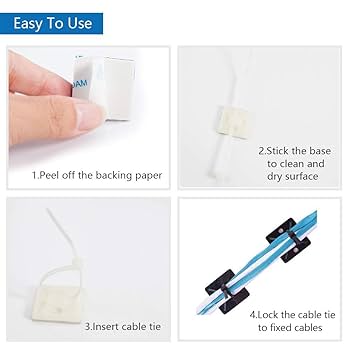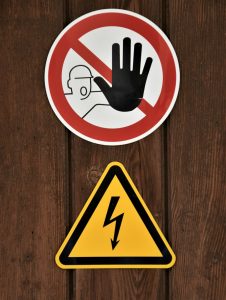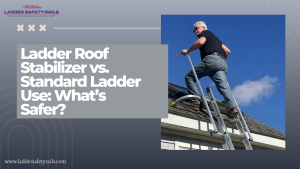Are you tired of struggling with heavy items that just won’t stay put on your walls? Imagine having a simple, reliable solution that makes mounting anything easier and stronger.
That’s exactly what a zip tie wall anchor can do for you. Whether you’re organizing your tools, hanging decorations, or securing cables, this small but powerful tool can change the way you tackle wall projects. Keep reading, and you’ll discover how to make your walls work smarter—not harder—for you.
What Is A Zip Tie Wall Anchor
A zip tie wall anchor is a tool used to secure zip ties to walls or surfaces. It helps hold cables, wires, or small items firmly in place. This device makes organizing easier and keeps spaces tidy.
Zip tie wall anchors are simple and effective. They work with standard zip ties and provide a strong attachment point on walls.
Basic Design And Components
The basic design of a zip tie wall anchor includes a flat base and a loop or slot. The base sticks to the wall, and the loop holds the zip tie. The parts are usually made of plastic for durability.
Some anchors have adhesive backing for easy mounting. Others use screws or nails for stronger hold. The size varies to fit different zip tie widths.
- Flat base for wall attachment
- Loop or slot for zip tie insertion
- Adhesive backing or screw holes
- Made of durable plastic
How It Works
You attach the zip tie wall anchor to a wall using glue or screws. Then, you thread a zip tie through the anchor’s loop. After that, you wrap the zip tie around cables or objects.
When you tighten the zip tie, it holds the items securely against the wall. This prevents cables from tangling and keeps things organized.
Advantages Of Zip Tie Wall Anchors
Zip tie wall anchors are handy tools for securing items to walls. They are known for their strength and ease of use.
These anchors offer multiple benefits for both home and industrial use. Let’s explore their key advantages.
Strength And Durability
Zip tie wall anchors provide reliable support. They hold heavy objects securely on various wall types.
Made from strong materials, they resist wear and tear. This ensures long-lasting performance.
- High load-bearing capacity
- Resistant to rust and corrosion
- Suitable for indoor and outdoor use
Ease Of Installation
Installing zip tie wall anchors is simple. You do not need special tools or skills.
They fit easily into pre-drilled holes and expand to hold firmly. This saves time and effort.
- Quick setup process
- No professional help required
- Minimal tools needed
Versatility In Applications
Zip tie wall anchors are versatile. They can be used in many situations and environments.
From hanging pictures to securing shelves, they adapt to different needs. This makes them a great choice for DIY projects.
- Ideal for both light and heavy items
- Works on drywall, brick, and concrete
- Suitable for home, office, and industrial use
Types Of Zip Tie Wall Anchors
Zip tie wall anchors help fix zip ties securely to walls. They come in many types for different needs. Choosing the right type keeps items safe and tidy.
Some anchors work well with plastic zip ties, others with metal. Surfaces like drywall or brick need special designs. This guide explains main types of zip tie wall anchors.
Plastic Vs Metal Anchors
Plastic anchors are light and easy to use. They fit well in drywall and soft surfaces. Metal anchors offer more strength. They work best on heavy loads or rough surfaces.
| Type | Material | Best For | Strength |
| Plastic Anchor | Plastic | Drywall, Soft Surfaces | Light to Medium |
| Metal Anchor | Steel or Aluminum | Brick, Concrete, Heavy Loads | High |
Specialty Designs For Different Surfaces
Zip tie anchors come in shapes made for certain surfaces. Some anchors expand inside holes to hold tight. Others have wide bases for drywall or thin walls. Choose the right design for your wall.
- Expansion anchors for concrete and brick
- Self-drilling anchors for wood
- Wide flange anchors for drywall
- Adhesive-backed anchors for smooth surfaces
- Hammer drive anchors for fast installation

Credit: wzzydlfj.en.made-in-china.com
Choosing The Right Zip Tie Wall Anchor
Zip tie wall anchors help secure items to walls safely. Picking the correct anchor makes your work strong and lasting.
Use anchors that fit your wall type and the weight you want to hold. This guide covers key points to choose well.
Matching Anchor To Wall Material
Different walls need different anchors. Drywall, brick, and concrete each require specific types for a safe hold.
- Drywall: Use plastic or metal anchors made for hollow walls.
- Brick: Choose anchors that expand in brick holes.
- Concrete: Use heavy-duty anchors that grip tightly.
- Wood: Simple screw anchors work well.
Load Capacity Considerations
Know the weight your anchor must support. Overloading causes damage or failure.
| Anchor Type | Max Load Capacity |
| Plastic Wall Anchor | Up to 10 lbs |
| Metal Expansion Anchor | Up to 50 lbs |
| Heavy-Duty Concrete Anchor | Up to 100 lbs |
| Toggle Bolt | Up to 75 lbs |
Size And Length Selection
Choose the right size and length to fit the wall and zip tie thickness. Too small anchors fail to hold well.
- Select anchor diameter to match zip tie thickness.
- Pick length that fits wall thickness plus extra for grip.
- Longer anchors hold better in thicker or hollow walls.
- Use packaging guides or measure wall depth before buying.
Step-by-step Installation Guide
Installing a zip tie wall anchor is easy and quick. This guide helps you fix it safely on your wall.
Follow each part carefully to ensure a strong hold. Use the right tools and materials for best results.
Preparing The Wall Surface
Clean the wall area where you want to install the anchor. Remove dust and loose paint for better grip.
- Use a damp cloth to wipe the surface
- Let the wall dry completely
- Check for cracks or holes and repair if needed
Drilling And Inserting The Anchor
Choose a drill bit that matches the anchor size. Drill a hole straight into the wall at the marked spot.
- Mark the drill spot on the wall
- Drill carefully to the required depth
- Insert the wall anchor fully into the hole
Securing The Zip Tie
Thread the zip tie through the anchor’s loop. Pull it tight to hold your item firmly against the wall.
- Insert the zip tie tail through the anchor
- Wrap around the item you want to secure
- Pull the zip tie until it is snug
- Trim excess tail with scissors
Tips For A Secure Mount
| Tip | Reason |
|---|---|
| Use a level | Ensure the anchor is straight for even support |
| Choose the right anchor size | Match the weight and wall type |
| Do not overtighten | Prevent damage to the wall or anchor |
| Check regularly | Keep the mount secure over time |
Common Mistakes To Avoid
Using zip tie wall anchors can help keep things neat and secure. But mistakes can cause problems and damage.
Learn the common errors to avoid for safe and strong wall anchoring.
Overloading The Anchor
Zip tie wall anchors have weight limits. Putting too much weight on them can cause failure.
When an anchor is overloaded, it may pull out or break, damaging your wall and items.
- Check the weight rating before use
- Distribute heavy loads across multiple anchors
- Avoid hanging very heavy objects with zip tie anchors
Improper Drilling Technique
Drilling the wrong hole size or depth weakens the anchor hold. The hole should match the anchor size.
Too large or deep holes cause the anchor to slip. Too small holes can break the anchor during insertion.
- Use the recommended drill bit size
- Drill straight and steady into the wall
- Clean out dust from the hole before inserting the anchor
Ignoring Wall Material Differences
Different walls need different anchors and methods. Using the wrong anchor can cause poor grip or damage.
Materials like drywall, concrete, and brick all react differently to anchors and drilling.
- Drywall requires anchors designed for hollow walls
- Concrete and brick need heavy-duty anchors and proper drill bits
- Know your wall type before choosing anchors and tools
Maintenance And Removal Tips
Zip tie wall anchors need some care to work well for a long time. Checking and removing them carefully helps avoid damage.
These tips will help you keep your anchors safe and make removal easier when needed.
Inspecting For Wear And Tear
Check zip tie wall anchors often. Look for cracks, bends, or breaks in the plastic. Damaged anchors may not hold well.
Also, make sure the wall around the anchor is not crumbling or loose. Weak walls reduce anchor strength.
- Look for visible cracks or splits
- Check if the anchor moves in the wall
- Notice if the tied object feels loose
- Inspect wall surface near the anchor
Safe Removal Methods
Remove zip tie wall anchors carefully to avoid wall damage. Use the right tools and gentle force for best results.
Cut the zip tie close to the locking head with small scissors or a wire cutter. Avoid pulling hard on the anchor.
- Use wire cutters or scissors for cutting ties
- Pull anchors gently from the wall
- Fill holes after removal if needed
- Wear safety glasses when cutting ties
Reusing Anchors And Ties
Reusing zip tie wall anchors is possible if they are not damaged. Check anchors carefully before reuse.
Zip ties are usually single-use. Once tightened, they can break if forced open. Use new ties for best security.
- Reuse anchors only if no cracks or damage
- Replace zip ties after removal
- Store unused anchors and ties in dry places
- Do not force ties open to avoid breakage
Popular Uses And Projects
Zip tie wall anchors are useful tools for securing items to walls. They hold cables, tools, and decorations neatly in place.
These anchors work in many projects. They keep spaces tidy and help with outdoor tasks too.
Home Organization
Zip tie wall anchors help organize cords and small items at home. They prevent clutter in rooms and garages.
Use them to hang tools, hold cables, or attach lightweight objects to walls. This keeps everything easy to find.
- Manage power cords behind desks
- Hang small gardening tools in the shed
- Secure decorations or picture frames
Outdoor Applications
Zip tie wall anchors work well outside too. They keep hoses, lights, and signs in place on fences or walls.
They resist weather and hold items tightly during wind or rain. This makes outdoor projects easier and safer.
- Secure garden hoses to walls
- Attach outdoor string lights
- Mount small signs or flags
Temporary Vs Permanent Mounting
Zip tie wall anchors can be used for both temporary and permanent setups. Choose based on the project needs.
Temporary mounting holds items briefly. Permanent mounting keeps them fixed for a long time.
- Temporary: Easy to remove and adjust
- Permanent: Use stronger anchors and ties
- Check wall type before choosing method
Where To Buy Quality Zip Tie Wall Anchors
Zip tie wall anchors help hold items on walls firmly. Buying good ones is important for safety and durability. You can find them in many places.
This guide shows where to buy quality zip tie wall anchors. It covers brands, stores, prices, and buying options.
Top Brands And Retailers
Many brands make zip tie wall anchors. Look for those known for strong materials and good reviews. Retailers often carry these trusted brands.
- Hillman – Known for durable hardware products
- Toggler – Offers reliable wall anchors for heavy loads
- Rawlplug – Popular for easy-to-use wall anchors
- Monument – Provides heavy-duty zip tie anchors
- Home Depot – Stocks many brand options
- Lowe’s – Carries a variety of wall anchors
Online Vs In-store Options
You can buy zip tie wall anchors online or in local stores. Each way has benefits. Online offers more choices. Stores let you see items before buying.
Online shops like Amazon and hardware websites have large stock. Local stores like Home Depot or Lowe’s give quick pickup and advice. Decide based on your needs.
Price Range And Value
Prices for zip tie wall anchors vary by brand and size. Cheap options may work for light jobs. Higher quality anchors cost more but last longer.
- Budget anchors: $5 to $10 for small packs
- Mid-range anchors: $10 to $20 with better strength
- Premium anchors: $20 and up for heavy-duty use
Choose anchors that fit your project needs. Spending a bit more can prevent damage or repairs later.

Credit: www.amazon.ca

Credit: www.amazon.ca
Frequently Asked Questions
What Is A Zip Tie Wall Anchor Used For?
A zip tie wall anchor secures cables, wires, or lightweight items to walls. It provides a sturdy grip and prevents damage to surfaces.
How Do Zip Tie Wall Anchors Work?
They work by inserting into a drilled hole, expanding behind the wall. This expansion holds the anchor firmly in place for zip tie attachment.
Can Zip Tie Wall Anchors Hold Heavy Objects?
Zip tie wall anchors are best for light to medium loads. For heavy objects, use specialized anchors designed for greater weight capacity.
Are Zip Tie Wall Anchors Easy To Install?
Yes, installation is simple. Drill a hole, insert the anchor, then secure your zip tie through it.
Conclusion
Zip tie wall anchors offer a simple and strong way to hang items. They work well on many surfaces and hold tight without damage. These anchors save time and effort during installation. Anyone can use them, even without special tools.
Choose the right size for the job to ensure safety. Zip tie wall anchors keep your walls neat and organized. A small change that makes a big difference in your space. Easy, reliable, and practical—an excellent choice for everyday use.








